In the rarified world of new motorcycle models, at least back in 1969, there were two aspects to be considered. One dealt with performance, the other with styling.
And in 1969, young Willie G. Davidson, grandson of a founder of the Harley-Davidson company, was made head of the styling department. Motorcycle “styling” of the era was limited in its scope: two wheels, engine, gas tank, fenders, saddle, headlight—that was about the extent of it.
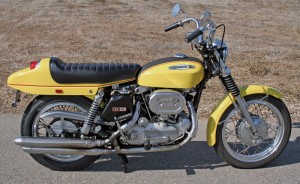
The traditional “bobber” was one approach, but that could easily be done by an owner, removing extraneous bits and pieces. The idea of a “chopper,” made notorious by the 1969 movie Easy Rider, required some real work in raking the frame, extending the fork, giving it a fat rear tire and more. This style became very popular, but the chopper image was not what Harley was after, as it suggested pot-smoking ne’er-do-wells rather than the clean-living citizens that were the intended customers. Maybe, just maybe, if something was added to the look of the motorcycle, something that would differentiate it from other motorcycles, that would be the ticket.
Nobody that I know of has ever claimed specific responsibility for designing the infamous “boat-tail” seat and fender, which first appeared as an option on the Harley Sportsters in late 1969. But with Willie G. at the handlebars of the department, some blame, or credit, must be due to his vision. The boat-tail, in reality, was a little test to see how the public would react to this motif.
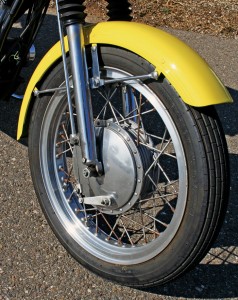
The motorcycle world had taken a radical change in the late ’60s, with the Brits bringing out their triples, and Honda the in-line four. This was all in the performance realm, with the styling staying pretty much the same as it had been for a decade—biggish tank, dual-seat and light fenders. Harley had recently been bought by AMF, and that parent company was interested in the bottom line, not in research and development. The newly adopted moto-child certainly was not given the money to develop a new engine, but then again the Sportster was only a dozen years in age. It had a gutsy motor, with the kickstart CH still being Competition Hot, while the electric-start H was a good model for those wanting to move into the V-twin world.
The Sporties were both 883cc (or 53.9 cubic inches) in a 45-degree V-twin, using a Tillotson carburetor and 9:1 compression ratio, and optimistically rated at 58 horsepower at 7,500 rpm—well before that engine speed big-time vibration had set in. The major difference between the two models was in weight, as the CH was running a Fairbanks-Morse magneto, the H an electric starter with a bigger battery. Wet weight on the CH was a clean 500 pounds, on the H, 35 pounds more. The sales approach was that either Sportster was a “man’s machine.” I assume the ladies need not apply, though it did not take much testosterone to push the button on the H’s handlebar.
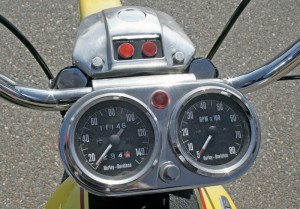
The Sportsters had reasonable sales, but the competition was getting to them. Maybe if they were jazzed up a bit visually that might attract some extra sales. Base price on the CH was $1,767, on the H, $1,840. Give them a trick look, without too much of a hit to the wallet, and see what happens.
The styling pens went to work, with the idea that a smooth line should go from the gas tank to the taillight, integrating the seat with the cover over the wheel—it could hardly be called a fender. Let the eye begin at the headlight and go all the way back to the license plate, which actually hung below the fiberglass unit and was intended to catch a lot of the road spray from the rear tire. The fiberglass folks got the drawings and clay mock-up and soon turned out the final unit, which had a flat saddle and a couple of aesthetic questions. It was sold as an option, for both the CH and H, for $60.
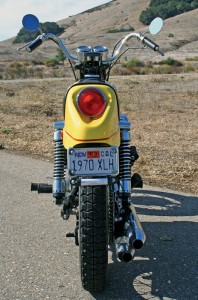
Up front, the connection with the gas tank was very skinny, making the bike appear a bit wasp-like. And it really looked odd on a CH model. At the back? Well, that was the biggest part of the motorcycle, and we’ve all heard those jokes about the wife asking the husband if a dress makes her butt look too large. It really caused an imbalance, especially if the bike had the 2.25-gallon “peanut” tank. The H model in the photos has the larger four-gallon tank, which is marginally better.
Looks were one thing, comfort was another, and at least one test editor found the “custom” seat more comfortable than the stocker. But most riders were interested in the visuals. Surprisingly, Harley seemed content not to broadcast big news about this big new design. Mostly it was seen on test bikes, and occasionally a dealer would mount one on a Sportster, hoping to add a few bucks to the price.
Looking in my small collection of old motorcycle magazines from late 1969 and 1970 for ads promoting this new styling adventure, there is very little. In December of ’69 there’s an ad about Harley accessories, and among the many products—shirt, boots, air-cleaner, helmet, etc.—is a three-quarter rear-end picture, about a tenth of the page, of the boat-tail seat mounted on a Sportster H. Then in April of ’70 there’s a two-page ad for Harley, with eight new bikes lined up, including an H with the boat-tail, with no reference to the fact that this was an option. In June 1970, a full-page ad shows a stock H without the boat-tail. If one looks closely at an ad Harley ran occasionally in ’70 and ’71, which showed an ideal, sparkling clean Harley shop with a mechanic working on a bike in the foreground, in the back you can see a little bit of the boat-tailed H.
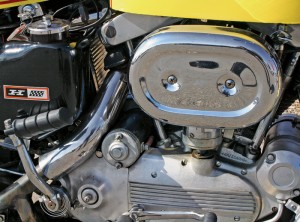
Editorial comments on the boat-tail? Minimal, except as comments in road tests of Sportsters which came equipped with the option.
In October 1971, a two-page ad featured 10 new Harleys, including a boat-tailless Sporty H dressed for touring with lots of options, but all eyes would come to rest on the new FX Super Glide, a Big Twin with a Sportster front end and a revised version of the boat-tail. Soon this was on the covers of several magazines, with the new model on test, and a definite improvement in the design of the boat-tail. The seat was now mildly stepped, and the fiberglass sides enlarged and decorated with better paint stripes and a chrome strip. And the split tanks of the 74-inch seemed to connect more gracefully. However, the lightweight front end from the Sportster gave it the appearance of someone with a nice face and a fat butt.
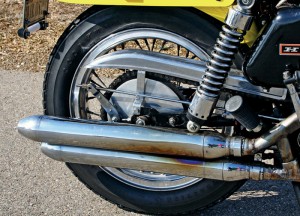
Reading a road test, I find the sentence: “The fiberglass seat/rear fender assembly will be the source of considerable debate.” Which probably had something to do with the fact that the ’72 Super Glide came with a conventional seat and rear fender. And the boat-tail was no longer an option for the Sportster.
(This Retrospective article was published in the June 2013 issue of Rider magazine.)







I always liked what we now call the “boat tail”. It has become the Triumph Bathtub of American motorcycles; nobody wanted them when they were new and now you can’t find one. Frankly, given the widely agreed upon discomfort that the standard Sportster saddle delivers, it’s not surprising that the boat tail was notably more comfy. I think a ’71 XLH with a nicely balanced crank, decent head work and some close trans gears would be a really nice street machine. If I could find one.
I have the one on marketplace if your serious about getting one, The seat isn’t with it, there is seat out there but price is stupid…There are good saddle makers out there, that will do a gr8 job a lot cheaper..IDK if Mike Corbin still custom makes seats like he did for my 72 XLH, back in 84. I called them about Gunfighter before the were available for my bike.Send me your seat pan
few weeks later UPS dropped it off…..Still run the seat, history behind it, isn’t too shabby either..
What colors were available.I picked up a gold boat tail w/white pin stripe . Iam almost certain its a Sportster version due to the flat seat area and size.. Too short trail fit on My 72 FL. Maybe color option can seal the answer